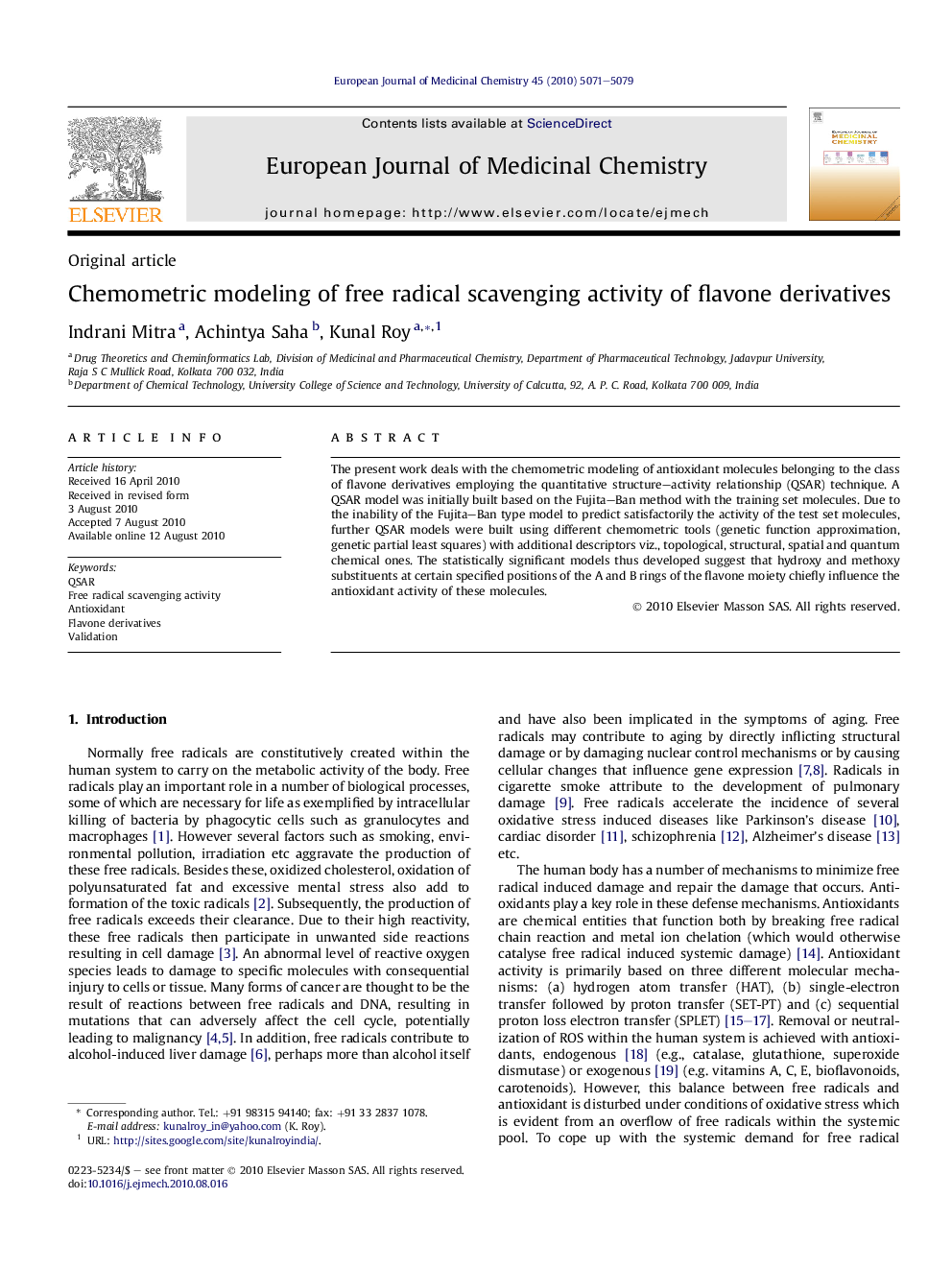| Article ID | Journal | Published Year | Pages | File Type |
|---|---|---|---|---|
| 1396280 | European Journal of Medicinal Chemistry | 2010 | 9 Pages |
The present work deals with the chemometric modeling of antioxidant molecules belonging to the class of flavone derivatives employing the quantitative structure–activity relationship (QSAR) technique. A QSAR model was initially built based on the Fujita–Ban method with the training set molecules. Due to the inability of the Fujita–Ban type model to predict satisfactorily the activity of the test set molecules, further QSAR models were built using different chemometric tools (genetic function approximation, genetic partial least squares) with additional descriptors viz., topological, structural, spatial and quantum chemical ones. The statistically significant models thus developed suggest that hydroxy and methoxy substituents at certain specified positions of the A and B rings of the flavone moiety chiefly influence the antioxidant activity of these molecules.
Graphical abstractThe present work deals with the chemometric modeling of antioxidant molecules belonging to the class of flavone derivatives (isoflavones, isoflavanes and biphenyl ketones) employing the quantitative structure–activity relationship (QSAR) technique.Figure optionsDownload full-size imageDownload as PowerPoint slide
